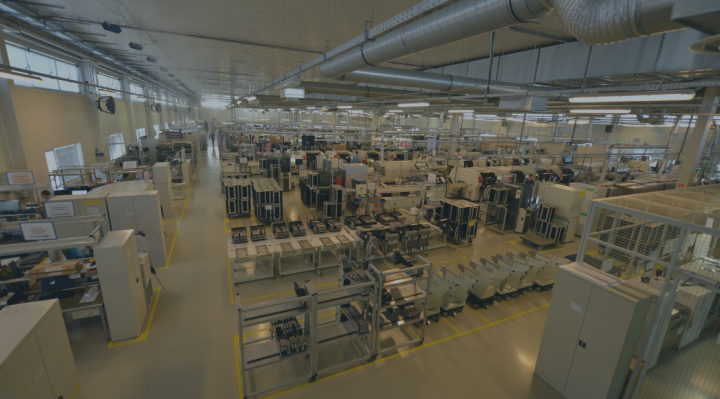Selecting a proper Electronics Manufacturing Services (EMS) partner is a key strategic choice that can have significant long-term effects for an organisation. Cost comparison is a part of the selection process, but it is just one of many pieces of a larger puzzle. Companies that focus most intensely on cost often overlook unintended expenses and operational risk associated with suboptimal quality, waste, and limited scalability. The reality is that fees do get negotiated, but an ill-fitting EMS provider can bring serious problems that are not so quickly remedied.
Alignment with culture, technical expertise, quality management, financial stability, and customer service levels are all factors that must be investigated in depth. A quality EMS partner is not just a supplier, but an extension of your company - one that must integrate comfortably into your operations model. Price should never be the only consideration, as it can be misleading and present unanticipated costs and operational challenges down the line.
The Importance of Visiting and Auditing an EMS Provider
While one may wish to begin by examining the price proposals, a proper visit and tour of the EMS provider's plant needs to be undertaken. It is not a one-man job but has to be performed by a team with the capability in many areas, including supply chain, engineering, and quality assurance. The trip presents a rare opportunity to have a meeting with the organisation's key stakeholders, assess their technical and organisational acumen, and find out whether or not there is a strong cultural fit between the two.
Knowing how the EMS provider works, how they solve challenges, and the transparency they provide about their process matters. If the visit and audit are positive, then proceeding to pricing analysis is the next phase in the evaluation process.
Looking Beyond the Price: Understanding the Total Cost of Ownership (TCO)
A common mistake that companies make when evaluating EMS providers is focusing on a single price point. Instead, the Total Cost of Ownership (TCO) has to be taken into account, as this provides a more accurate view of the costs of the alliance. There are several key issues that should be taken into consideration:
1. Incoterms and Logistics Considerations
Shipping responsibilities, insurance, and taxes are all established by the Incoterms chosen. A theoretically less expensive provider on paper can have unfavourable Incoterms that will quietly increase your logistics operations' expense. The location of the EMS provider should also be considered in terms of your final market. Proximity to customers by geography impacts shipping expenses, lead time, and inventory management complexity.
2. Tariffs and Import Fees
Contracting with an EMS provider in a country that is liable to high import duties can add unexpected costs to the completed product. Trade agreements and local laws must be carefully reviewed to determine likely tariff impacts.
3. Payment Terms and Financial Impact
The payment terms offered by an EMS provider can have a great impact on cash flow. Good payment terms, such as longer payment due dates or prompt payment discounts, represent a considerable financial advantage. Other than this, foreign exchange risks will have to be considered while working with a foreign supplier.
4. Evaluating Risk Factors Beyond Pricing
Even if they are competitively priced, a high-quality control problem EMS provider, a supply chain problem EMS provider, or a production flexibility problem EMS provider will cost a firm significantly more in the long run. Evaluating the potential risk beforehand is the most important factor in making an intelligent decision.
5. Defect Rates and Quality Control
Poor quality may bring increased returns, increased cost of rework, and damage to brand reputation. Information regarding an EMS provider's average defect levels and parts per million (PPM) levels provides you with a sense of the quality you can expect. A high defect level provider may cause excess cost in terms of rejected units, warranty claims, and even customer dissatisfaction.
6. Production Planning and On-Time Delivery (OTD)
Supply chain breaks and poor production planning can have a material impact on your ability to satisfy demand. Examining an EMS provider's supply chain planning, inventory planning, and scheduling practices can preclude delay that incurs cost and enhance operations. A provider with a reliable planning system will be able to accommodate changes easily in demand and emergency orders.
7. Capacity and Scalability
An overloaded provider may struggle to keep pace with increased demand, creating production bottlenecks. It is advisable to find out if the EMS partner can scale production, either by adding additional SMT lines or by using vacant warehouse space. Companies looking for aggressive expansion plans should find out if their EMS provider can grow with them.
8. Minimum Order Quantities and Shipping Constraints
Some EMS providers have minimum order quantities that are set and do not work well with your business model. When shipment sizes are too large, it will impact cash flow and warehousing costs. Being aware of these limitations in advance can help avoid logistical and fiscal issues.
9. Handling of Engineering Change Orders (ECOs)
For fast-moving markets, design revisions and product modifications are inevitable. Some EMS providers charge separately for Engineering Change Orders (ECOs), which can add a significant cost burden over the long term. It is advisable to clearly define at the start whether ECOs are included in price plans or not, or whether additional charges will be incurred.
Additional Considerations for Long-Term Success
Along with short-term production capacity and pricing, the overall capabilities of the EMS provider have to be taken into account. Having an added-value services provider can bestow long-term benefits.
- Box Build and Assembly Capabilities
If expansion in the future means expanding into full product assembly, it can be a real advantage to work with an EMS supplier that already has box build capabilities. It avoids the time and expense of adding new suppliers and makes the manufacturing process easier.
- Design for Manufacturability (DfM) Expertise
A good Design for Manufacturability (DfM) supporting supplier can potentially reduce production costs and enhance yield levels. Effective DfM input can lead to a more efficient production process with fewer defects, thus reducing long-term costs.
- Tooling and Fixture Capabilities
Some EMS providers have tooling capabilities in-house, which can be useful while designing customised fixtures to maximise production efficiency and quality. For example, incorporating solutions such as Poka-Yoke can reduce human error and ensure maximum consistency of production.
- Sustainability
As sustainability is a top-priority concern, quantifying the energy usage of an EMS provider, waste reduction initiatives, and environmental initiatives can have cost and ethical implications. Energy-efficient manufacturers are likely to survive higher energy costs, and organisations that have faith in sustainability must ensure that their EMS partner also follows the same philosophy.
Final thought: The Bigger Picture Matters
When reviewing EMS price proposals, businesses must examine the price being quoted and consider the larger picture of their decision. Not only must a good EMS partner be cost-effective, but it should also fulfil your business's operational requirements, quality level, and future growth strategies.
An effective evaluation needs to go beyond total cost of ownership, supply chain resiliency, production scalability, and overall partnership fit. By reviewing these attributes, companies can secure a manufacturing partner capable of delivering reliability, flexibility, and long-term value - much more than even a comparison of price would suggest.







